This page compares the peg sizes in the inner-most whorl of the largest club suckers of various individuals. Ideally comparisons should be made with squid of all the same size due to the increase in lateral peg size with mantle lenght in some species. Unfortunately this was not possible; therefore, pay close attention to squid mantle lengths.
- North Atlantic: M. agassizii - 53°N the temperate/boreal form, and 37°N the temperate/boreal form ?
 Click on an image to view larger version & data in a new window
Click on an image to view larger version & data in a new window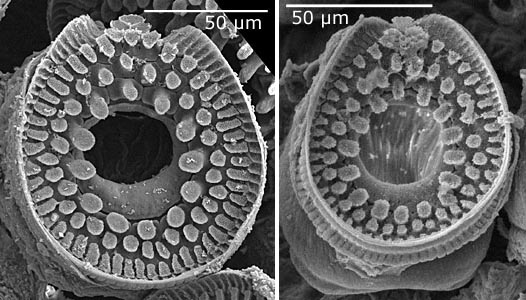
Figure. Oral views of large club suckers. Left - M. agassizii, 62 mm ML, immature male, 52°45'N, 35°57'W. Right - M. agassizii, 72 mm ML, immature female, 37°15'N, 73°54'W. Squid are a bit small but exhibit no marked increase in size of lateral pegs.
- North Atlantic: M. agassizii - ca. 26°N (Gulf of Mexico) the tropical form
 Click on an image to view larger version & data in a new window
Click on an image to view larger version & data in a new window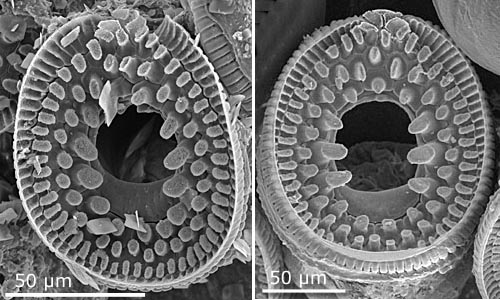
Figure. Oral views of the club suckers of M. agassizii, SC 95-T8G of M, 82 mm ML, immature male. Left - Proximal region of large club suckers. Right - Distal region of large club suckers. Both regions of the club show increased sizes of lateral pegs.
- South Atlantic: M. agassizii - 13°S the tropical form.
- South Atlantic: 39°S. M. psychrophila, M. agassizii the tropical form
 Click on an image to view larger version & data in a new window
Click on an image to view larger version & data in a new window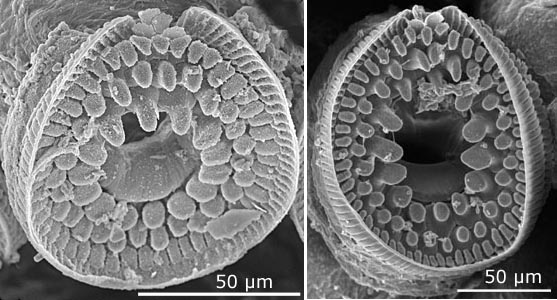
Figure. Oral views of club suckers, 39°19'S, 03°15'W. Left - Tilted sucker , 64 mm ML. Right - Unattached club, ML unknown, but rather large. This station caught two species and we believe the suckers here represent M. psychophila (left) and M. agassizii (right).
- Southern ocean, 63°S. M. psychrophila
 Click on an image to view larger version & data in a new window
Click on an image to view larger version & data in a new window
Figure. Oral views of large club suckers from two specimens of M. psychrophila, Left - NMNH 817378, 100 mm ML, immature female. Right - NMNH 884836, 85 mm ML, immature male, 62°50'S. 114°30'W. These large individuals show uniform peg size in the inner whorl of the outer ring.
- Equatorial Pacific Ocean: 6°N. M. dentata
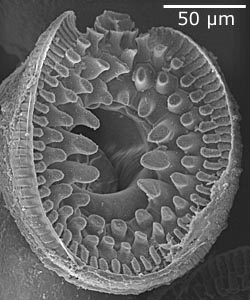
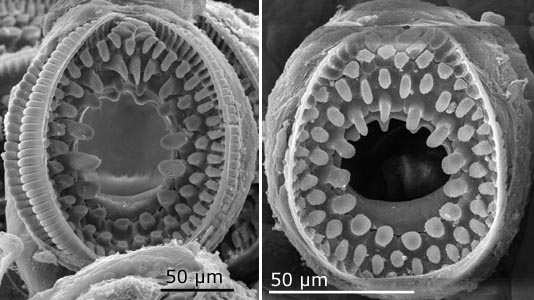




 Go to quick links
Go to quick search
Go to navigation for this section of the ToL site
Go to detailed links for the ToL site
Go to quick links
Go to quick search
Go to navigation for this section of the ToL site
Go to detailed links for the ToL site